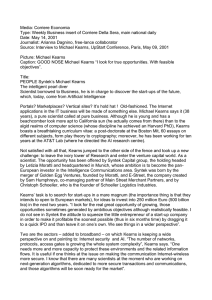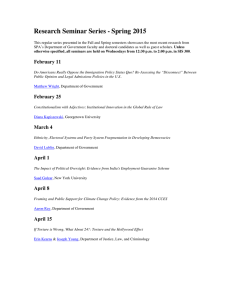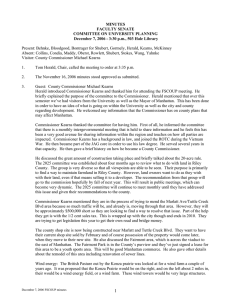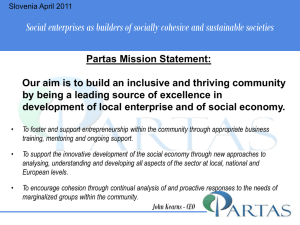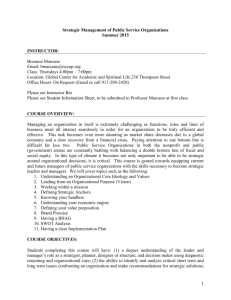Connections do count
advertisement
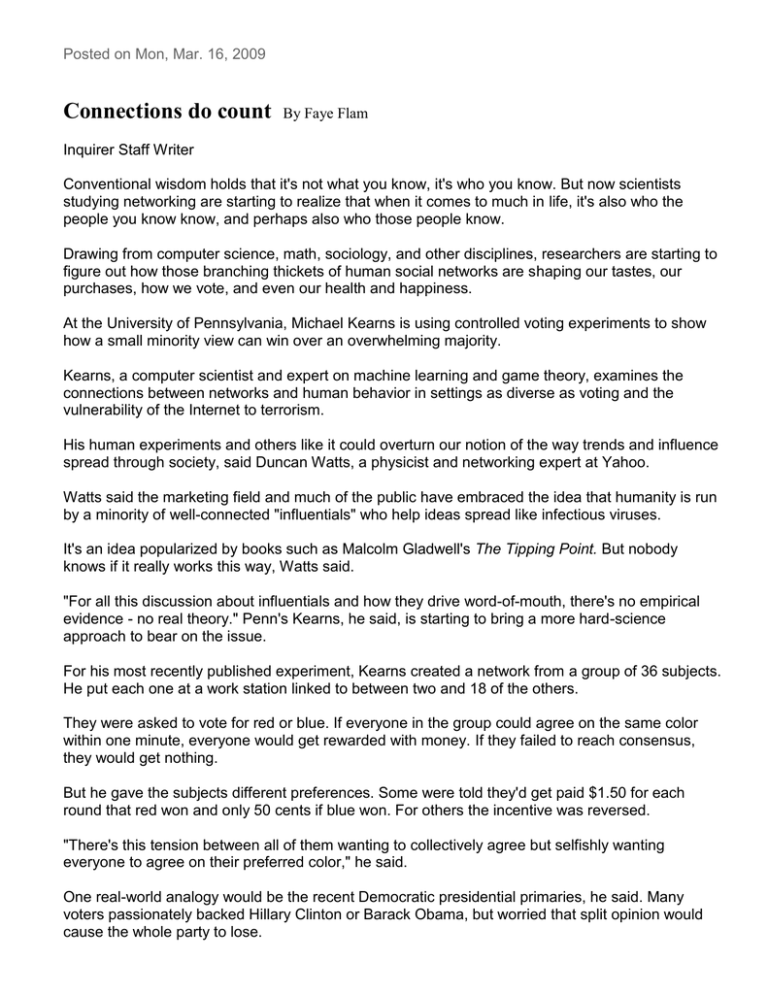
Posted on Mon, Mar. 16, 2009 Connections do count By Faye Flam Inquirer Staff Writer Conventional wisdom holds that it's not what you know, it's who you know. But now scientists studying networking are starting to realize that when it comes to much in life, it's also who the people you know know, and perhaps also who those people know. Drawing from computer science, math, sociology, and other disciplines, researchers are starting to figure out how those branching thickets of human social networks are shaping our tastes, our purchases, how we vote, and even our health and happiness. At the University of Pennsylvania, Michael Kearns is using controlled voting experiments to show how a small minority view can win over an overwhelming majority. Kearns, a computer scientist and expert on machine learning and game theory, examines the connections between networks and human behavior in settings as diverse as voting and the vulnerability of the Internet to terrorism. His human experiments and others like it could overturn our notion of the way trends and influence spread through society, said Duncan Watts, a physicist and networking expert at Yahoo. Watts said the marketing field and much of the public have embraced the idea that humanity is run by a minority of well-connected "influentials" who help ideas spread like infectious viruses. It's an idea popularized by books such as Malcolm Gladwell's The Tipping Point. But nobody knows if it really works this way, Watts said. "For all this discussion about influentials and how they drive word-of-mouth, there's no empirical evidence - no real theory." Penn's Kearns, he said, is starting to bring a more hard-science approach to bear on the issue. For his most recently published experiment, Kearns created a network from a group of 36 subjects. He put each one at a work station linked to between two and 18 of the others. They were asked to vote for red or blue. If everyone in the group could agree on the same color within one minute, everyone would get rewarded with money. If they failed to reach consensus, they would get nothing. But he gave the subjects different preferences. Some were told they'd get paid $1.50 for each round that red won and only 50 cents if blue won. For others the incentive was reversed. "There's this tension between all of them wanting to collectively agree but selfishly wanting everyone to agree on their preferred color," he said. One real-world analogy would be the recent Democratic presidential primaries, he said. Many voters passionately backed Hillary Clinton or Barack Obama, but worried that split opinion would cause the whole party to lose. Behind the scenes, Kearns rigged the experiment in different ways, sometimes mixing up the incentives so that some students got only $1.25 for pushing their color on the group and 75 cents if they went the other way. Despite the short deadline, he said, people came to some agreement in 55 out of 81 separate trials. He found that sometimes a tiny minority could rule. In the most extreme cases, red won when only six subjects preferred it, the other 30 wanting blue. All the members of the minority needed was "influence" - that is, more connections within the group than the people they competed against. " 'Influential' people can determine the outcome to their liking," Kearns said, even if the majority has a strong incentive to go the other way. In this case having lots of connections made a subject influential. Another surprise was that mixing different financial incentives helped the group to agree more often. "Having some fraction of extremists is actually helpful," he said. If all in the group are too wishy-washy, they will keep switching colors and never agree. Being unique individuals, the subjects played with different strategies - some easily swayed by neighbors, others stubbornly holding their preferred color until a win appeared impossible. When it came to who left with the most money, Kearns found that the spoils went to those who were most stubborn - but not completely intractable. Since the whole game is lost if there's no consensus, he said, "being too stubborn is fatal." In real elections, networking is already becoming important, said Kearns. Last year, Obama used networking to rally support, but it had to do more with the use of e-mail and cell phones to recruit new volunteers than with exploiting existing social networks. Future candidates may find much more powerful tools. Yahoo's Watts said that until recently, most networking experiments used computer models. Kearns, he said, helped pioneered techniques for testing real people. The next step will be to scale everything up. In a group of 36 people, knowing 20 people might make you well-connected, he said, but what about in a group of 36 million people? Watts, who studied nonlinear dynamics - popularized as chaos and complexity theories - has found that human networks are surprisingly unpredictable and quirky. Just as a butterfly flapping its wings eventually changes the global weather in unpredictable ways, so the whim of one listener can ripple outward to rearrange the pop charts. In one recent experiment, Watts used the Web to recruit 14,000 people and had them rank a series of 48 new, unknown songs. Not surprisingly, when the volunteers knew about choices other people made, they changed their preferences completely to conform to the group. But when he divided the recruits into eight groups, he got radically different results. A song deemed number one by one group would fall to 42d in the next. "We assume things are popular because that's what people want," he said. "But this is showing that's wrong - people have no idea what they want." Popularity seems to come in equal parts from random luck and merit. Other researchers are also exploring the power of the Web for their experiments. Cornell University computer scientist Jon Kleinberg got a MacArthur "genius" grant in 2005 to study the way ideas and fads spread through the population. "This is something we see all around us - but it's been very hard to gather data on how this is happening and why, and what it looks like on a global level." One way he's approached this is to track e-mail petitions and chain letters. To his surprise, he said, the letters didn't fan out as much as he'd anticipated, considering that we're all only six degrees of separation from everyone else on the planet. Despite their limited reception, the messages and chain letter he tracked survived longer than expected, perpetuating themselves for months through a small segment of the population. "The trajectories of these things go much deeper and narrower through the population than you'd expect." Others are looking at how networks might influence health and happiness. Using data from a wide-scale Framingham, Mass., health survey, sociologist Nicholas Christakis of Harvard Medical School found that obesity, smoking habits, and even self-reported happiness levels spread through social networks. That means your weight, health, and happiness may be nudged not only by friends but by friends of friends you don't know. Kearns said the networking site Facebook also offers potential for insight. He often assigns his students problems that involve sorting and analyzing their own Facebook networks. But Facebook networks are not always what they appear to be. Most of Kearns' students have accounts with several hundred so-called friends, while a few are bristling with thousands of connections. That doesn't necessarily mean those heavily friended are influential, however, holding the power to start a new footwear fad or catapult a new artist to stardom. "They may just be more promiscuous about who they include as a friend."
